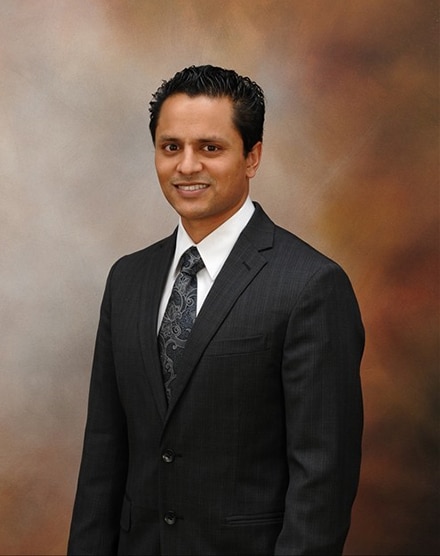
The carotid arteries are the two main arteries that bring blood supply to the brain from the heart. These arteries travel in the neck and connect to each other through collateral blood vessels within the brain. Your arteries are normally smooth and unobstructed on the inside, but as you age, a sticky substance called plaque can build up in the walls of your arteries. Plaque is made up of cholesterol, calcium, and fibrous tissue. As more plaque builds up, your arteries narrow and stiffen. This process is called atherosclerosis, or hardening of the arteries. When enough plaque builds up to reduce or disturb blood flow through your carotid arteries, it can cause a stroke.
Carotid Artery disease refers to narrowed or completely blocked vessels. Some plaque deposits are soft and are prone to cracking or forming roughened, irregular areas inside the artery. If this happens, your body will respond as if you were injured and flood the cracked and irregular areas with blood-clotting cells called platelets. A large blood clot may then form in your carotid artery or one of its branches. If the clot blocks the artery enough to slow or stop blood and oxygen flow to your brain, it could cause a stroke. More commonly, a piece of the plaque itself, or a clot, breaks off from the plaque deposit and travels through your bloodstream. This particle can then lodge in a smaller artery in your brain and cause a stroke by blocking the artery. Alternatively, debris from the plaque can cause a transient ischemic attack (TIA). TIAs are a warning sign that stroke is imminent unless swift action is taken. TIAs, by definition, last less than 24 hours and may take the form of slurred speech, weakness, numbness, or change in vision. If you develop any of these conditions, then you must report to the Emergency Room immediately.
Fortunately, you may be able to prevent or slow carotid artery disease. Quitting smoking is the most important change you can make to avoid this disease. Other ways to prevent carotid artery disease include:
• Exercising regularly
• Eating a healthy diet
• Maintaining a healthy weight
Controlling factors that increase your chances of developing carotid artery disease, such as diabetes, high blood pressure, or high cholesterol, also help prevent the disease.
Vascular Medicine and Surgery specialists are well equipped to take care of people with carotid artery disease and other conditions involving the vasculature such as peripheral arterial disease (PAD), aneurysm disease, and vein disease amongst many others. The key is to control vascular disease risk factors in order to prevent progression of disease.
Takki A. Momin, MD
Vascular and Endovascular Surgeon
Diplomate, The American Board of Surgery
About Eastside Medical Center
Eastside Medical Center has been a leader for 33 years in a wide range of state of the art healthcare, including emergency services, neurosurgery, orthopedics, women’s services, neurosciences, oncology, cardiology and behavioral health. Eastside is a 310-bed, full-service, acute care medical center with nearly 1,200 employees and 500 affiliated physicians. The hospital is fully accredited by The Joint Commission. The Eastside Medical Center – South Campus located on Fountain Drive off of Highway 78 in Snellville, provides inpatient psychiatric treatment for adults. It also has a Wound Clinic, Pain Center, and 20-bed Rehab Center.

